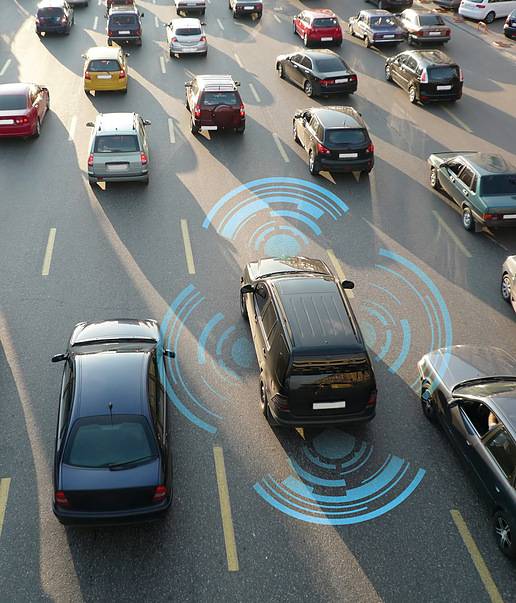 V2X通信的优势非常明显,但可能很难在缺少政府强制性要求的情况下一飞冲天。
V2X通信的优势非常明显,但可能很难在缺少政府强制性要求的情况下一飞冲天。
美国监管机构已在今年9月20日发布了全美首部适用于自动车测试研发的政策指南时,而在这一指南的准备阶段,汽车厂商就已经开始讨论,是否有可能在监管还未到位的情况下,进行车-车通信技术(V2V)的应用推广。与此同时,汽车行业也在继续讨论,政府机构应该自动汽车和互联汽车推广中扮演怎样的角色。
今年6月,在恩智浦飞思卡尔技术论坛(NXP Freescale Technology Forum)的专题讨论环节,发言人从多个角度探讨了适用于自动驾驶汽车的政策法规。目前的情况是,美国部分州不允许进行无人驾驶汽车测试,大多数州不允许无人驾驶车辆上路。很多专家均表示,希望美国国家公路交通安全局(NHTSA)或交通运输部可以推出适用于自动驾驶汽车的国家级法规。
“在短期内,美国各州仍将采用各不相同的规定。”全球汽车生产商联盟(Global Automakers)CEO John Bozella表示,“我希望这种情况不会持续太久。各州的确有资格参与政策的制定,但并不应该对自动驾驶车辆如此区别对待。我们呼吁NHTSA出面的原因之一,就是希望出台各州通用的法规。”
“数据问题”颇为头痛
NHTSA在V2X推进中扮演的角色同样重要。专家组成员指出,通用汽车(General Motors)已经为旗下2017款凯迪拉克CT6搭载了V2X通信技术,但有人担心在政府的强制性要求生效前,很少有厂商愿意负担加装专用短程通信(DSRC)系统的成本。支持者认为,DSRC系统可提供一种非线性视觉信息输入,从而提高车辆的安全性并促进自动驾驶汽车的发展。
发言人还着重介绍了DSRC系统在降低成本方面的潜力。举个例子,交通运输系统可以通过调节红灯时长,改善交通阻塞状况,但这需要道路传感器的帮助,而DSRC信号则无需传感器,可以直接提供实时交通信息,从而节省一大笔开支。
“我们不再需要在道路下方铺设各种基础设施。”恩智浦V2X商业开发部总监Andrew Turley表示,“管理者可以利用这部分资源做更多的事情,比如为驾驶员提供更多有用的信息,或收集交通堵塞相关数据等。”
尽管恩智浦大会上有部分专家表示,V2X技术将最终成为驾驶汽车发展进程中不可或缺的一环,但也有人持不同观点。比如,在交通高峰期,汽车不断发送速度和位置信息时,管理这些数据也面临一定挑战。
“我已经逐渐意识到这不再是一个用‘必须采用该技术’就能回答的问题。”咨询公司毕马威(KPMG LLP)国家汽车主管Gary Silberg表示,“这里存在着一个有关数据的巨大难题,也就是如何分析来回传递的信息,然后筛选其中的有用数据。”
有关“后门”的担忧
此外,5G数据通信网络可能用于执行部分,甚至全部V2X任务,这也引起了一些担忧。5G技术可以提供V2X通信所需的高带宽和低网络迟延,但一些支持DSRC的人认为,该系统架构已经相当完善,搭建一套类似的汽车级网络架构并不费事。
丰田信息技术中心(Toyota Info Technology Center)高级研究员Guarav Bansai表示,“5G技术可以将网络延迟控制在1毫秒之内,但放弃DSRC并不容易。长久以来,汽车行业已经在DSRC系统上投入了太多精力。这是发送短消息的最佳方式。”
虽然V2X和自动驾驶技术的发展可能离不开政府的参与,但一部分参与网络安全交流的专家组成员认为,很大程度而言,政策介入可能并不是一件好事。苹果和美国联邦调查局(FBI)曾进行过著名的“后门”大战,在本次大会上,专家们也探讨了汽车长商是否应为警方或其他机构留有访问数据的“后门”。讨论嘉宾们对政府机构在建立行业安全性规定方面的作用并不看重。
“简单来说,除非汽车行业无所作为,否则政府不应干预这一进程。”德尔福电子产品(Delphi Electronics)网络安全工程技术主管Jone Krzeszewski表示,“留‘后门’并不是一个好主意,你永远没法保证,从‘后门’进来的都是好人。”
考虑到互联性和自动驾驶发展中的众多问题,在隐私保护和安全保障之间取得平衡绝非易事。在未来,车辆数据访问的入口甚至可能对民众个人安危产生直接影响。
Cloudfare公司首席安全研究员Marc Rogers表示,“可能在某些情况下,我们应该为应急救援人员提供系统的访问权限。”
他说,“现实是,根本不存在所谓的安全的后门,但这不代表你无法设计一个系统,来提供正确的信息。”
While U.S. regulators were preparing the first policy guidance on autonomous-vehicle testing and development, released Sept. 20, OEMs were discussing whether they can achieve broad usage of vehicle-to-vehicle (V2V) technologies without regulations. Meanwhile the industry continues to debate the role of governmental agencies in autonomous vehicles and connected cars.
In panel sessions at the NXP Freescale Technology Forum in June, speakers addressed different aspects of regulations and legislation for autonomous vehicles. Some states won’t allow testing of driverless vehicles, and most won’t allow unattended driving. Many panelists expressed hope that the NHTSA or the Dept. of Transportation would create national rules for autonomous cars.
“In the short term, there will probably be different rules for different states,” said John Bozella, CEO of Global Automakers, a consortium of OEMs. “I’m hopeful that will disappear in the long term. There’s a role for states, but it is not to set characteristics for vehicles. One reason for having NHTSA is to set rules that permit interstate commerce.”
A "huge data problem"
NHTSA’s role in V2X is equally important. Panelists noted that GM is introducing the technology on the 2017 Cadillac CT6, but there’s concern that few will add the expense of dedicated short range communications (DSRC) until government mandates level the playing field. Proponents say that DSRC’s ability to provide non-line of sight input will improve safety and help autonomous vehicles evolve.
Speakers also touted its potential cost-saving capabilities, for example replacing costly under-road magnetic sensors used to adjust stoplight times to improve traffic flow. DSRC signals provide real time information on traffic conditions.
“The infrastructure under the road won’t be needed any more,” said Andrew Turley, Director of V2X Business Development at NXP. “Managers can do more with the information, sending more information to the driver and gathering data on congestion, for example.”
While some panelists at the NXP event said that V2X will eventually be needed by autonomous cars, that wasn’t a unanimous opinion. One factor is that managing the data created when every car in rush hour traffic is sending speed and location data.
“I’ve evolved to think that it’s no longer a have-to-have,” said Gary Silberg, National Automotive Leader at KPMG LLP. “There’s a huge data problem, looking at what information will go back and forth and determining what’s useful and what’s not.”
Back-door concerns
There’s also concern that 5G cellular signals will take over part or possibly all the tasks now expected for V2X. 5G will provide the bandwidth and possibly the low latency needed for communications. However, proponents note that while the architecture for DSRC is well-established, there’s been little work to create a similar automotive grade architecture for cellular.
“With 5G you can do 1 millisecond latency, but the auto industry has worked on DSRC for years. It’s the best way to send short messages” said Guarav Bansai, Senior Researcher at Toyota Info Technology Center.
While governmental input may be required for V2X and autonomous driving, panelists who discussed cyber security largely agreed that legislative involvement is not desirable. Referencing Apple’s battle with the FBI over so-called "back doors," attendees asked whether automakers should provide back doors to allow police and others to access data. Panelists downplayed the need for governmental agencies to force security rulings on the industry.
“Basically, government should not be involved unless we don’t act,” said John Krzeszewski, Cybersecurity Engineering Technical Lead at Delphi Electronics. “Back doors are not a good practice, you’re never sure a back door will only accessed by good guys.”
Balancing privacy and safety can be a difficult challenge given the myriad issues surrounding connectivity and autonomy. In the future, there may be instances when personal safety may hinge on access to data on a vehicle.
“There may be cases where access to systems should be provided to first responders,” said Marc Rogers, Principal Security Researcher at Cloudfare.
“The reality is there’s no such thing as a secure back door, but that doesn’t mean you can’t design a system to provide the right information,” he said.
Author: Terry Costlow
Source: SAE Automotive Engineering Magazine
等级
打分
- 2分
- 4分
- 6分
- 8分
- 10分
平均分
- 作者:Terry Costlow
- 行业:汽车
- 主题:噪声、振动与声振粗糙度零部件质量、可靠性与耐久性工程设计与造型电气电子与航空电子测试与检验
